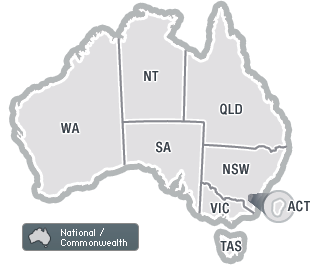A coalition of business leaders has released a new guide explaining how employers can significantly reduce the prevalence and impact of domestic violence through a three-level model. Also in this article, the Fair Work Commission has rejected an appeal against a domestic-violence-related ruling.
The coalition, Male Champions of Change (MCC), is made up of 30 Australian CEOs, department heads and non-executive directors and tackles gender equality issues. It engaged KPMG to assist in developing a guide on how organisations should respond to domestic and family violence experienced by staff.
Released on Friday, Playing Our Part: Workplace Responses to Domestic and Family Violence says about 1.4 million Australian women are living in abusive relationships or have done so in the past, and that 800,000 of them are in paid work.
KPMG estimates that domestic and family violence will cost Australian businesses $609 million annually by 2021.
Domestic violence affects employees' ability to contribute to work, their ability to attend work, and their performance through feeling anxious, distracted and unwell, MCC says.
Level one – Making a start
The first step organisations of any size can take to tackle the issue is seeking "to understand how they can make a difference", MCC says.
Employers should introduce a diversity and inclusion strategy, make gender equality a "known business imperative", and ensure leaders role model "respectful and gender-equal relationships", the guide says.
It says employees who have disclosed experiencing domestic or family violence should feel safe at work, and recommends organisations:
- adjust workers' time and location of work if feasible;
- provide workers with security support, such as an escort to their car;
- ensure people and systems protect employee privacy; and
- ensure workers aren't discriminated against or victimised.
Providing workers with access to free and confidential counselling – such as 1800RESPECT – or an employee assistance program with domestic violence expertise is also vital to tackling the issue, the guide notes.
Level two – Getting serious
"At Level Two, employees and managers have a strong sense of the organisation's commitment to making a difference on domestic and family violence. Employees understand they can ask. Managers feel equipped to help," the guide says.
Employers should ensure leaders demonstrate a "deep understanding" of the links between domestic violence and gender inequality, prevalence data and common myths; include International Day for the Elimination of Violence against Women (25 November) in the corporate calendar; and encourage employees to call out inappropriate behaviour, it says.
They should also:
- communicate domestic violence support regularly through multiple channels and at important touch points such as during induction and training;
- allocate resources to introduce domestic violence policies;
- ensure managers understand how to respond to employees affected by the issue – including perpetrators – such as how to talk about it and what support to provide;
- provide workers with information about "effective bystander interventions"; and
- outline appropriate workplace behaviour and use of work resources (such as phone and email) in their Code of Conduct.
Further, paid leave is "an effective intervention that provides a temporary safety net" for employees, the guide says.
For example, employers can provide 10 days additional paid leave – which "appears to be a developing norm" – and label it as "domestic violence leave" so employees are aware it is available.
Level three – Integrated
"At the third level, organisations work to continually improve the ways they support those impacted by violence and establish the workplace as an active partner in a whole-of-community response to ending domestic and family violence," MCC says.
The guide suggests employers regularly evaluate the support they provide and treat it as a "significant people process" by reviewing metrics and seeking improvement opportunities through an accreditation partner.
Organisations should also introduce initiatives that involve customers, suppliers and the community, it says.
For example, ANZ bank encourages financial literacy among vulnerable groups through financial education program MoneyMinded.
Playing Our Part: Workplace Responses to Domestic and Family Violence, November 2015
FWC rejects permission to appeal domestic-violence finding
In related news, an employer that was ordered to pay a domestic violence victim $27,500, after the Fair Work Commission found it forced her to resign, has been refused permission to appeal.
As reported by OHS Alert in July, FW Commissioner Julius Roe found Eliana Construction and Developing Group Pty Ltd unfairly dismissed the worker, who was the victim of domestic violence and worked in the same office as the perpetrator – her partner (see related article).
Commissioner Roe found the employer told the worker it was unable to protect her from her partner, that it wouldn't dismiss her partner, and that she should resign to help her employment prospects.
The employer applied for permission to appeal, arguing it acted "reasonably and diligently" in not terminating the partner's employment, and the FWC placed too much weight on family violence committed outside the workplace.
But FWC Vice President Graeme Watson, Deputy President Reg Hamilton and Commissioner Leigh Johns found there was "no issue of general application arising from [Commissioner Roe's] findings, and no issue of public interest".
"The findings about domestic violence were specific to the case in question, and related to [the worker's] absence from work because of domestic violence, and the consequent difficulties of [her] and her former partner working together in the office," they said.
Eliana Construction and Developing Group Pty Ltd v Moghimi [2015] FWCFB 7476 (6 November 2015)



